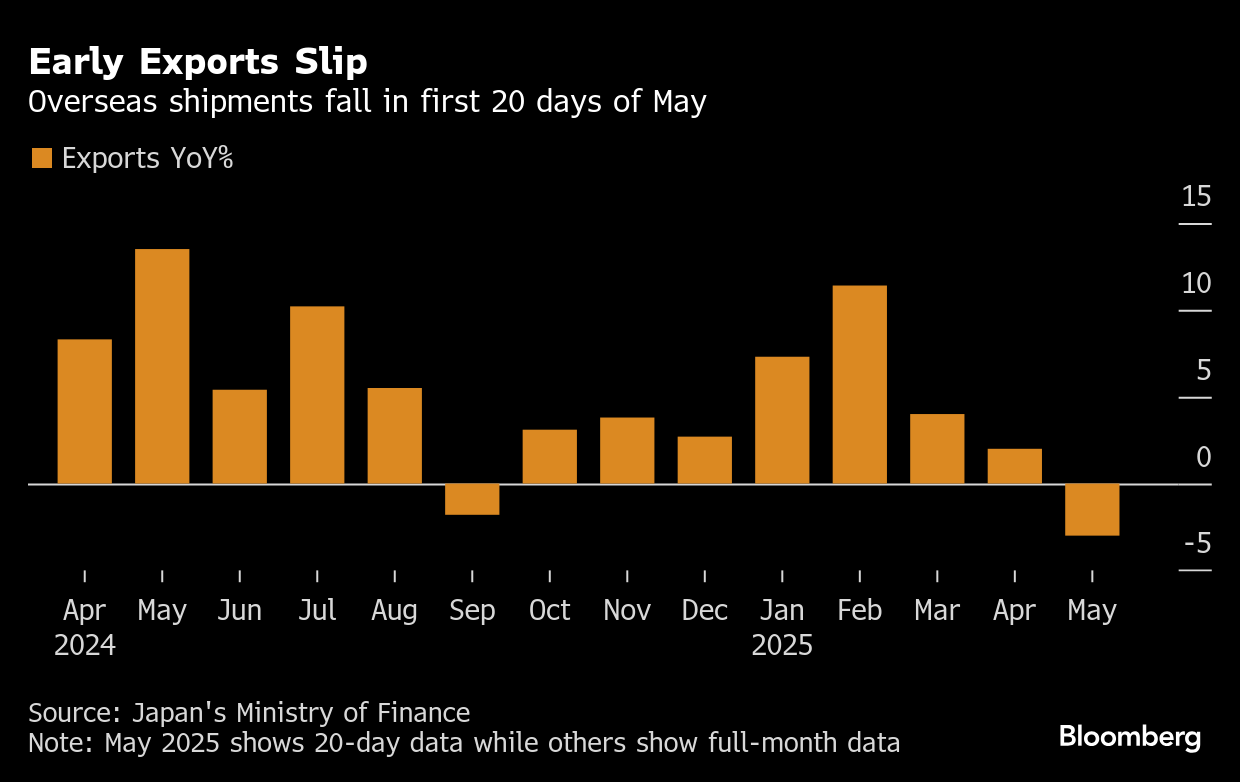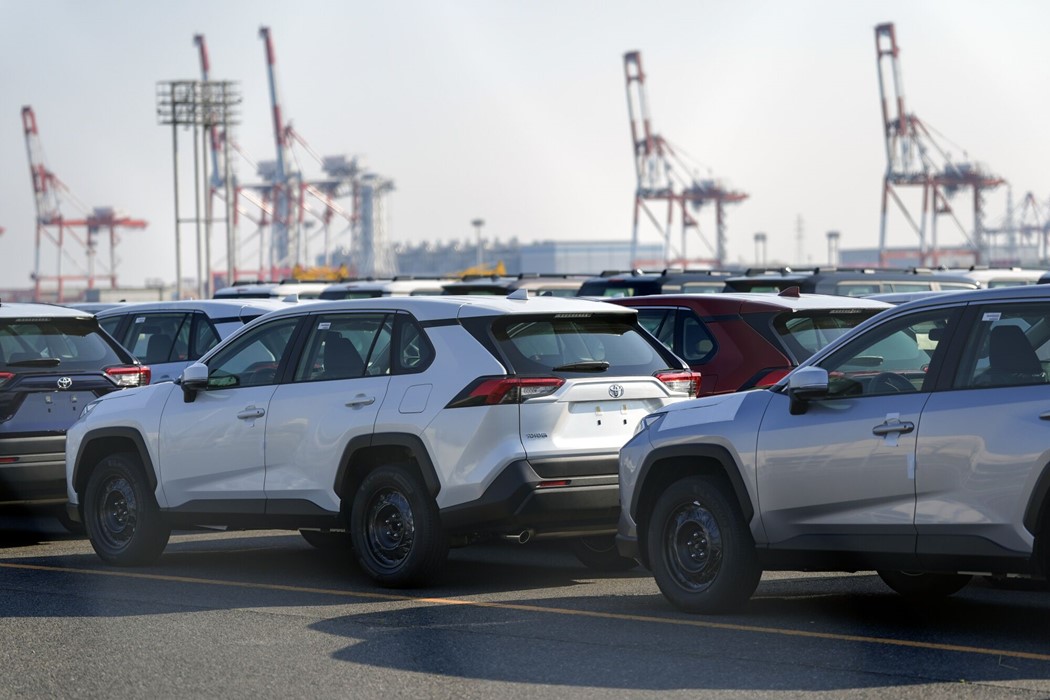Japan’s Early May Exports Drop as Tariff War Upends Commerce
Jun 06, 2025 by Bloomberg(Bloomberg) -- Japan’s exports fell in the first 20 days of May as the Trump administration’s sweeping tariffs continued to disrupt trade.
Exports measured by value dropped 3% from the same period a year earlier, the Finance Ministry reported Friday. That compared with a 2.3% gain in the first 20 days of April, and a 2.0% rise for all of that month. Growth in exports has averaged 6.2% over the year through April.

Japan’s trade balance for the period was in the red, with a deficit of ¥1.1 trillion ($7.7 billion). The 20-day data don’t provide details such as a breakdown of exports to specific countries or regions. The figures for the full month of May are set to be released on June 18.
“The impact of tariffs is gradually becoming clear. I believe that a significant decline in automobile exports will occur down the road,” said Shinichiro Kobayashi, chief economist at Mitsubishi UFJ Research and Consulting. “Currently, car sales in the US are still strong, so there is some demand for exports, but as sales decline, exports to replenish inventories will naturally decline further.”
Autos, steel and chips and other electronic components led exports lower while coal, non-ferrous metal and crude oil drove down imports, according to the Finance Ministry. The yen averaged 143.02 against the US dollar during the period in May, 8% stronger than the same period a year earlier, which weighed on the readings for yen-denominated exports and imports, according to the ministry.
The trajectory for trade will be a key factor determining whether Japan’s economy enters a technical recession in the current quarter after weak external demand and sluggish private consumption resulted in a contraction in the previous period. In April, exports to the US fell, led by a drop in autos.
As with other nations, Japan faces a 25% tariff on cars and their parts and a minimum 10% levy on other goods across the board. President Donald Trump doubled a levy on steel and aluminum to 50% in early June, and the 10% tariff is set to revert to 24% in early July, barring a deal.
There are early indications that the tariffs are narrowing the US trade gap, in line with one of Trump’s goals. The US gap in goods and services trade shrank 55.5% in April from the prior month, as imports fell by a record 16.3%, Commerce Department data showed Thursday.
On May 12, the US and China, Japan’s two biggest trading partners, announced that they had reached a temporary agreement on reducing tariffs. But tensions have flared since then, with Trump complaining earlier this week that Chinese leader Xi Jinping is “hard to make a deal with.”
Japan and the US are continuing to negotiate on the tariffs as they eye possibly announcing a deal on the sidelines of the Group of Seven leaders’ gathering in Canada later this month. Japan’s top trade negotiator Ryosei Akazawa said upon arrival in Washington Thursday that he would continue to press for a removal of all tariffs.
(Updates with economist’s comments.)
©2025 Bloomberg L.P.
By


















